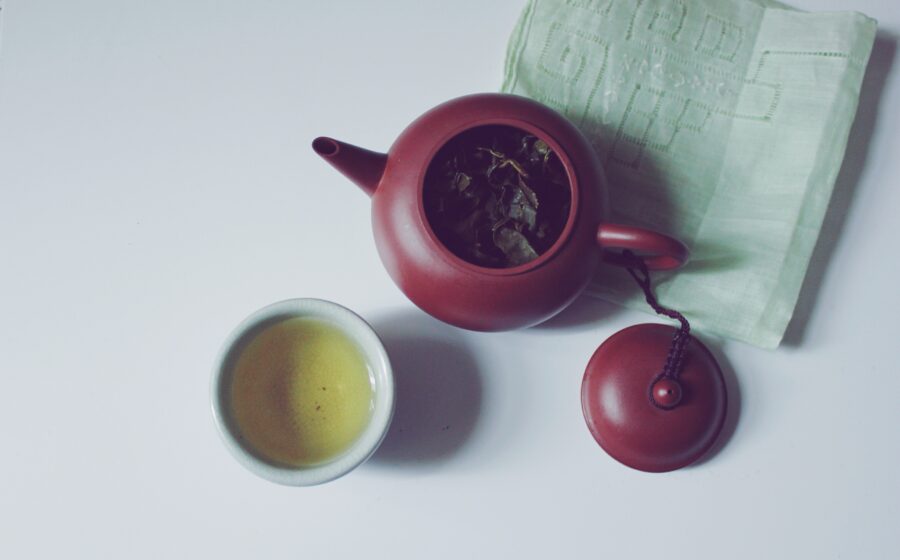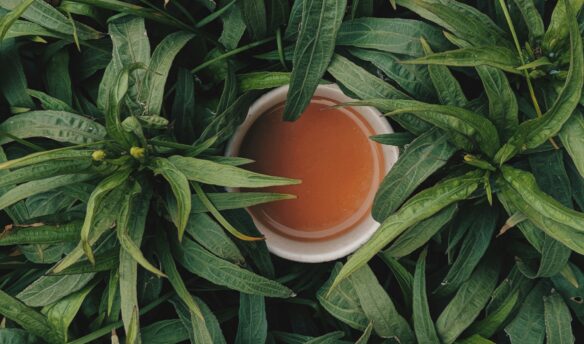[W]alk into a tea enthusiast’s home and you’ll often find a curated collection of teapots lining shelves and tucked into cabinets. Keep in mind that the delicate vessels are not simply ornamental. In fact, there are particular tea pots recommended for specific tea types, like glass for Japanese green teas and yixing tea pots for oolong and pu-erh.
The classic yixing tea pot, pronounced “yee-shing,” was introduced during China’s Ming Dynasty (1368-1644). Traditionally made with purple clay found in the Jiangsu province of China, the unglazed pot retains high heat. Its petite size is purposeful as it is intended to be used for the gongfu style of steeping, which calls for larger quantities of tea, shorter steeping times, and successive brews served and shared in small cups.
To practice the art of gongfu, warm the yixing tea pot with boiling water, empty that water, and then fill the teapot one third to one half full with leaves that benefit from subsequent steepings. This style of steeping slowly coaxes complex character from oolong teas over the course of re-steeps (sometimes up to six to eight rounds). Beyond uncovering layers of flavor lingering within leaves, this tea experience lets us establish a deeper connection with the tea as we settle near the tea pot and devote time to appreciating its very essence. Make a commitment to a state of calm and connect with what you’re carefully pouring into each cup.

The last drop of tea splashes into your cup, yet the tea still remains. How so? Well, consider the interior clay of the yixing pot a blank canvas that is painted with layers of past steeps. The porous clay absorbs the aromas and flavors throughout the prolonged steeping, retaining the essence of each steep. Over time the yixing pot carries flavor that seasons the pot to intensify future steepings. Consider it the partner to your well worn cast iron pan that has become a family heirloom.
Because of this precious porous nature, it’s essential to designate yixing tea pots for each tea type (one for light oolong, another for dark oolong, and one for puerh). The delicate nature of the pot must be treated with care. So there two rules: (1) only use one type of tea per yixing pot and (2) never, never, never wash it with soap or scrub the inner surface. A quick rinse of cold water will remove any remnants of leaves while retaining the flavor that you are carefully nurturing. Your yixing teapot is the living element in your collection of teaware that will forever grow and change as you mold and shape the flavor.
Over time the yixing pot carries past flavors that season the tea pot to intensify future steepings.
The moment that you lift the lid tightly nestled into the top of the clay pot, lean quite close and let the warmth and intense fragrance envelop your face. That is a moment to treasure with your yixing gongfu experience. If you are steeping a tightly rolled oolong, watch how the tea unfurls ever so slightly until the whole leaf is revealed. It’s as if you held the fast-forward button on nature, rapidly moving through the seasons with every steep as the tightly coiled tea (representing the seed) quickly unfurls to a full leaf. Suddenly the pot almost cannot contain the leaves bursting from underneath the lid.
This handcrafted humble tea pot has the ability to capture the tradition of a culture while creating an heirloom all your own, happily stained with memories of steeps. Like rings in a tree, the flavors of the tea wrap within the yixing tea pot and grow with us throughout our steeping years.
—Story and photos by Alexis Siemons, tea writer and consultant. Alexis blogs about her steeped adventures at teaspoonsandpetals.com.
















